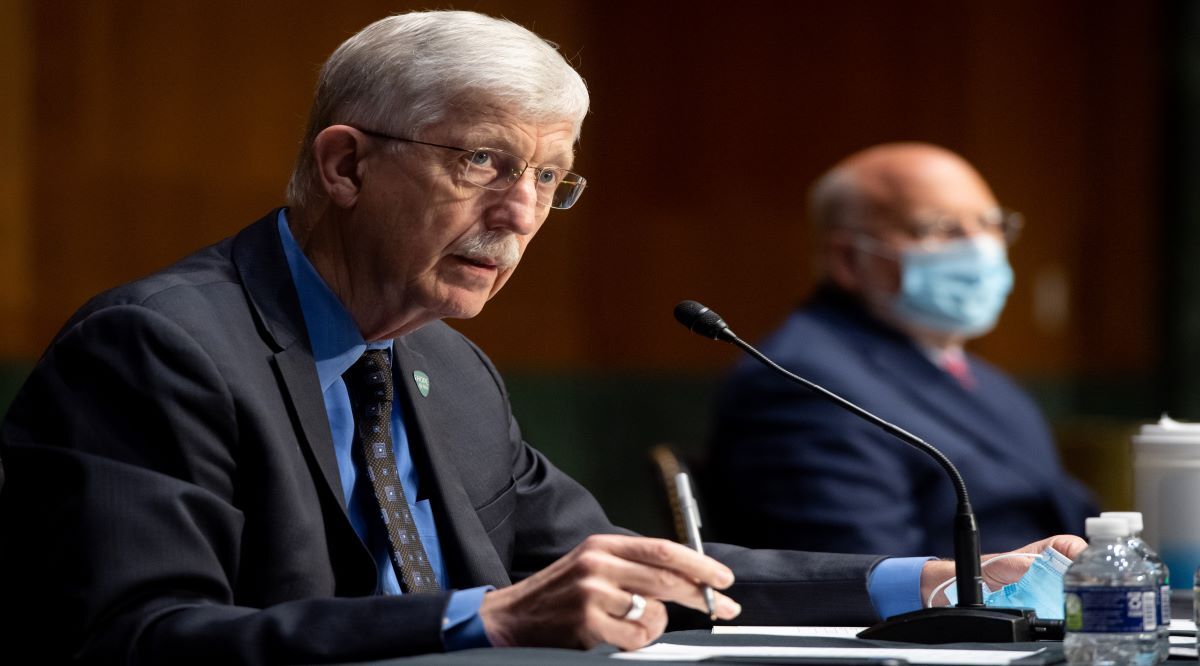National Institutes of Health (NIH) Director Francis Collins, MD, PhD, in testimony before the Senate Appropriations Subcommittee on Labor, Health and Human Services, Education, and Related Agencies (Labor-HHS-Ed) on July 2, estimated that $18.8 billion in emergency funding would be needed for the NIH to respond to COVID-19. That includes approximately $10 billion to offset expenses associated with lab disruptions.
Dr. Collins’ estimate came in response to a question from Subcommittee Chairman Roy Blunt (R-Mo.), who urged agencies to send estimates “in the next couple of weeks,” previewing a potential timeline for Senate activity to develop a fifth comprehensive COVID-19 supplemental package.
Sen. Jerry Moran (R-Kan.) noted the subcommittee’s historic support for the NIH and expressed his concern for the consequences of the pandemic on NIH-funded research.
“My impression is that research that should be ongoing today is not … What is it that we need to know to make certain that we provide the resources that would quickly restart the capabilities of NIH?” Sen. Moran asked.
Dr. Collins verified that much of the research enterprise scaled back its laboratory work. “It is fair to say we have lost a lot of time with research,” he said. He described the financial difficulties faced by universities and medical centers because of the shuttered labs in addition to reduced income from elective surgeries and other medical procedures.
Since March, the AAMC and other higher education organizations have been recommending $26 billion to mitigate COVID-19-related disruptions at all federal research agencies, including $10 billion for the NIH, as outlined most recently in a May 27 letter to Senate leadership [see Washington Highlights, May 29]. The AAMC has also endorsed the Research Investment to Secure the Economy (RISE) Act (H.R. 7308), which would authorize $10 billion in research relief for the NIH as part of a larger $26 billion authorization for all federal research agencies [see Washington Highlights, June 26].
In addition to the $10 billion estimate for restarting pre-pandemic research projects, which Dr. Collins had noted in a previous hearing [see Washington Highlights, May 8], he also explained that funds are needed for COVID-19 projects at individual NIH institutes and centers ($2.2 billion), as well as interinstitute collaborations related to COVID-19 ($1.6 billion). The agency has also identified $5 billion in “shovel ready” projects to aid in the NIH’s response to the pandemic.
Dr. Collins also described ways the agency is currently working to expand its COVID-19-related work. In response to a question on the pandemic’s impact on individuals with substance use disorders, Dr. Collins cited a 42% increase in overdoses over the course of the pandemic, adding that prescriptions for buprenorphine and other proven medications have “plummeted” because of lack of access to treatment programs. “We are doing everything we can at NIH with supplements to some of our research programs to try to understand how best to intervene,” Dr. Collins added.

The senators also posed questions to other witnesses on the panel about the response of other parts of the HHS. Ranking Member Patty Murray (D-Wash.), as in previous hearings with administration officials, noted concern over a lack of a comprehensive national vaccine plan, adding that she is working on a proposal “to require the Trump administration to provide a comprehensive plan for how it will make sure we get a vaccine that is safe and effective, produced at scale, and distributed nationwide, and free and available to everyone in a way that addresses the health disparities this pandemic has made worse.”
Centers for Disease Control and Prevention (CDC) Director Robert Redfield, MD, shared the CDC’s preparation for and enhanced ability to distribute vaccines, noting, “Each year CDC safely distributes vaccine from manufactures to nearly 40,000 public and private health providers.” Dr. Redfield estimated that the CDC will be able to scale up to a distribution of 900 million COVID-19 vaccine doses.
On Operation Warp Speed, the government program to quickly and safely develop coronavirus therapeutics and vaccines, several members asked witnesses if the accelerated pace of development jeopardizes the Food and Drug Administration’s review and the safety of the vaccines. Witnesses testified that the faster process is not compromising safety, noting that time will be saved in other parts of the vaccine development process, such as through at-risk manufacturing.
Biomedical Advanced Research and Development Authority (BARDA) Acting Director Gary Disbrow, PhD, testified that BARDA is working with its partners across multiple, integrated workstreams to expand capacity to produce materials that will be needed to deliver a vaccine, such as syringes, vials, and needles. He also testified that 100% of vaccine manufacturing will be done in the United States.
Ranking Member Murray and Sen. Jeff Merkley (D-Ore.) shared concern over the potential for high prices of COVID-19 therapeutics and vaccines, noting that some BARDA contracts have removed language giving the government march-in rights, the ability for the government, under certain circumstances, to require patent holders to license their patent rights to another applicant.. Dr. Disbrow responded that for the government to march in, the contractor must show that they are not achieving “practical application of the invention” in a timely manner. “This is not occurring,” he added. “We are all working very quickly to push forward with the development of vaccines and therapeutics.
Dr. Collins added that the march-in rights established by the Bayh-Dole Act (P.L. 96-517) were not intended to impact drug pricing but rather “were intended to try to allow the government to step in when there was a company that basically refused to try to produce a product that would benefit the public.”